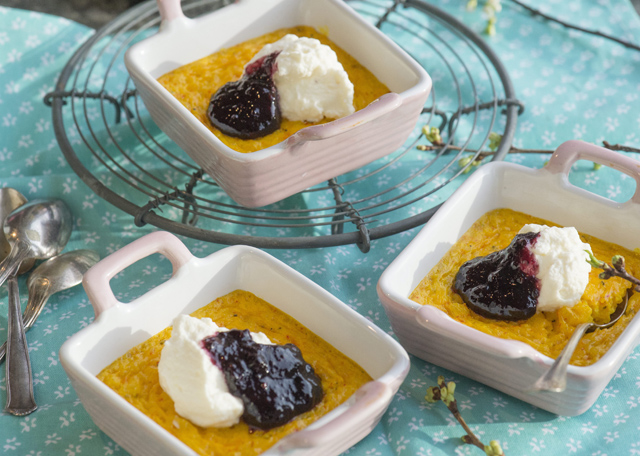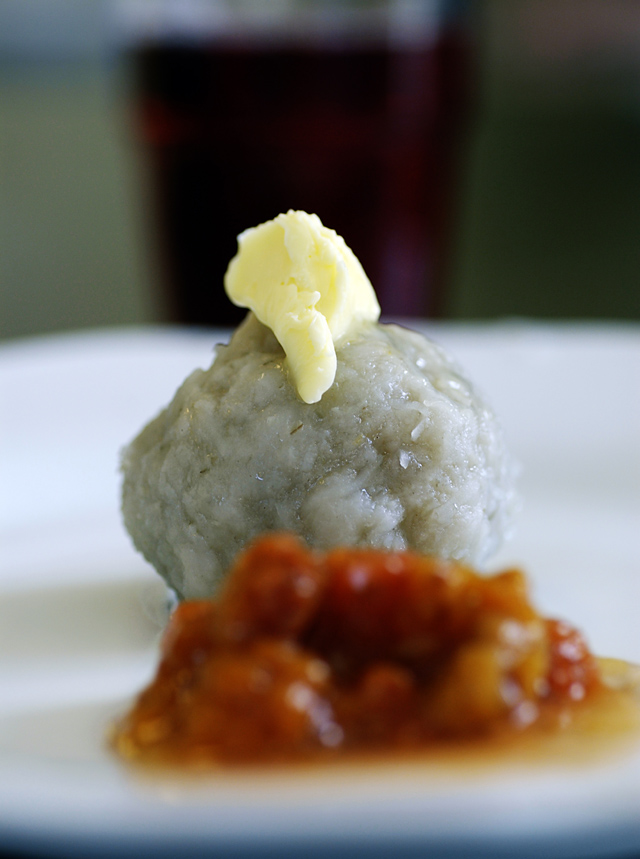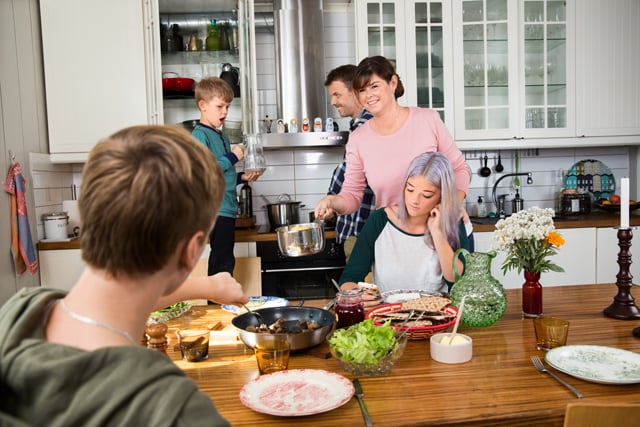Article first published on Sweden's national day in 2016.
These recipes are shared with The Local courtesy of Taste of Sweden. Scroll down for a map of the best recipes each Swedish region has to offer. And click here for even more typically Swedish recipes.
1. Starter: Chili and Saffron Pancake
This is a twist on the island of Gotland's saffron pancake speciality. Modern and savoury, it makes for the perfect starter at your dinner party. Serve together with a tasty spring salad.
Serves: 4

A twist on this traditional Gotland saffron pancake. Photo: Leif R Jansson/TT
Ingredients, pancake
250g rice pudding
zest from ½ lemon
0.25g saffron
1 egg
100ml whipping cream
½ tsp sambal oelek
½ tbsp flour
100g goat cheese
butter
Ingredients, salad
250g asparagus
1kg shrimp (unpeeled)
10 ramson leaves
3 garlic cloves
½ chili (we recommend spanish peppers)
100ml mild olive oil
1 tbsp chopped thyme
zest from one lemon
salt and pepper
1 tbsp lemon juice
Method
1. Heat oven to 200C/180C fan.
2. In a bowl, mix together rice pudding, lemon zest, saffron, egg, whipping cream, sambal oelek and flour.
3. Pour the pancake mixture into a buttered tin and sprinkle the goat's cheese on top.
4. Bake for 25-30 minutes and then leave to cool. For best result, leave overnight.
5. Cut the asparagus into 2-3cm pieces and cook in lightly salted water.
6. Peel the shrimps and put to the side. Cut the ramson into strips, and peel and slice the garlic and chili.
7. Fry the garlic and chili over high heat. Make sure the garlic does not burn. Leave to cool.
8. Add the shrimps, asparagus, ramson, thyme, zest and lemon juice. Mix together and add salt and pepper to taste.
9. Serve together with the saffron pancake.
2. Main course: Bacon filled potato balls
Its Swedish name, Pitepalt, is named after the city of Piteå in northern Sweden and is best described as a Swedish-style dumpling.
Serves: 4

Anyone in the mood for some palt? Photo: Jurek Holzer/SvD/SCANPIX
Ingredients
1kg potatoes
0.5kg boiled potatoes
300-500g flour
salt
660g bacon
Method
1. Peel and grate the potatoes and put in a strainer to remove any excess water. Grate the boiled potatoes and cut the bacon into cubes.
2. Combine potatoes, salt and gradually add flour so it creates a doughy texture. Do not add too much flour as you still want the mixture to be a bit wet.
3. Roll the mixture into balls, flatten with your hand, fill with bacon and roll into a ball. Make sure the bacon is completely covered by the potato dough.
4. Cook the potato balls in salted water for 45 minutes, or until they are floating on top of the pan.
5. Serve with lingonberry jam and melted butter.
3. Dessert: Spit cake from Skåne
A spit cake ('spettekaka' or 'spiddekaga' in a regional accent) is a southern Swedish speciality and is made by layering the batter on a rotating spit over an open fire or special oven. This recipe shows you how to make the cake using a regular oven. Good luck!
Serves: 20

Crown Princess Victoria and a spit cake from Skåne. Photo: Jonas Ekströmer/TT
Ingredients
600g sugar
6 eggs
600g potato starch
Method
1. Whisk the egg yolks and sugar together until pale and fluffy. Fold in the potato starch and stir until you've got a smooth and creamy mixture. Whisk the egg whites until stiff and add to the mixture.
2. Put the mixture in a piping bag with a nozzle of 1cm. Pipe the mixture in a spider web pattern onto a burning boiler (25x35cm). Bake in the middle of the oven, 125C/105 fan, until hard, and then repeat until all mixture is gone. Every layer needs to be made smaller and smaller, so it resembles the structure of a tower.
3. Once the complete tower is baked, leave to cool until it's ready to serve.



 Please whitelist us to continue reading.
Please whitelist us to continue reading.